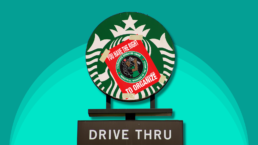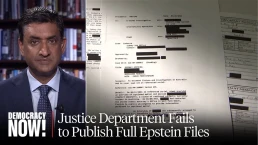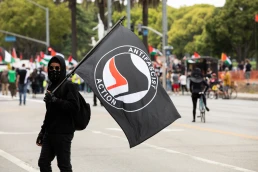The current Starbucks CEO, Kevin Johnson, last year took home 1,211 times more compensation than the company’s most typical employee, a part-time barista annually making $12,113.
By Sam Pizzigati, Inequality.org
The cream always rises to the top. Howard Schultz must love this folk maxim. And well he should. Understanding the ways of cream has helped make Schultz — the two-time former CEO and current chairman emeritus of Starbucks — a billionaire almost five times over.
That classic folk wisdom about cream has another attraction for a billionaire like Schultz. The maxim, metaphorically speaking, neatly serves to help justify all his billions. Why shouldn’t Howard Schultz be sitting way up high and pretty? In business as in beverages, after all, the cream just naturally rises.

Starbucks baristas in the upstate New York city of Buffalo might beg to differ. Cream does rise, they understand. But that rising cream never achieves actual separation — physical distance — from the rest of a beverage. Schultz and his fellow Starbucks movers and shakers, on the other hand, have achieved that physical separation. The enormous wealth they’ve extracted out of Starbucks has shifted them into an entirely different sphere of human existence.
The current Starbucks CEO, Kevin Johnson, last year took home 1,211 times more compensation than the company’s most typical employee, a part-time barista annually making $12,113. In effect, Johnson “earned” more in compensation before his first morning coffee break of 2020 than the most typical Starbucks employee made from an entire 12 months of labor.
And the $14.7 million Johnson pocketed in 2020 pales against the rewards his executive predecessor Howard Schultz spent his years at the Starbucks summit collecting. Over the course of his second stint as the company’s CEO, between 2008 and 2017, Schultz realized $553.3 million in compensation, an average $61.5 million annually over the nine years. A typical Starbucks barista would have to work for 50 centuries to earn that $61.5 million.
The baristas of Buffalo have a better idea. At three Starbucks outlets in the Buffalo area, they’ve been organizing to become “the first corporate-owned Starbucks in the country to unionize.”
The about 100 employees at these three Buffalo Starbucks locations have been voting by mail on the union bid. The National Labor Relations Board will be tallying their ballots next week, on December 9.
Starbucks management, to no one’s surprise, has been pressing those employees to vote “no” on union representation, mixing a variety of intimidating approaches. Managers in Buffalo, says Jaz Brisack of Starbucks Workers United, “are singling out people that they think are going to vote no or undecided, threatening them, telling them that they could lose everything if they vote for the union.”
Starbucks has also been carpet-bombing Buffalo with global Starbucks luminaries. On the first Saturday in November, Starbucks even shut down all its Buffalo storefronts early and paid workers to attend a two-hour gala at the local Hyatt Regency hotel that featured the legendary coffee king Howard Schultz himself.
Starbucks didn’t let the news media into the event, but company flacks did circulate afterwards a letter about the get-together that Schultz sent to all his Buffalo “partners,” the standard Starbucks-speak label for employees.
“What the leadership team has done in Buffalo is what we have always done,” the Schultz letter intoned. “We listen. We learn. We get better together. No partner has ever needed to have a representative seek to obtain things we all have as partners at Starbucks. And I am saddened and concerned to hear anyone thinks that is needed now.”
Starbucks will continue to be, Schultz pledged, a “for-profit company imbued with love, social conscience and shared success based on shared responsibility.”
But the Starbucks corporate commitment to sharing success remains as tepid as ever, as the company’s CEO Johnson made plain last month as he detailed his upcoming wage plans in a quarterly earnings conference call with Wall Street analysts.
Starbucks is currently paying an average hourly wage of $14 an hour, significantly below the $15 minimum wage the national “Fight for $15” campaign has been seeking for almost a decade. Schultz and Starbucks have been opposing this campaign all along, but, with the current national labor shortage, the company has now started talking higher wages. Starbucks CEO Johnson announced in his earnings call that Starbucks now intends to up its average hourly pay to $17 by next summer. The total increase in wages and benefits would add up to about $1 billion for the company’s 2021 and 2022 fiscal years.
How big a chunk of Starbucks treasure does that $1 billion represent? Starbucks registered a $20.3-billion gross profit over the 12 pandemic months that ended this past September 30.
“Shared success” at Starbucks appears quite a ways off. Next week’s vote count in Buffalo could begin rewriting that timetable.
Sam Pizzigati co-edits Inequality.org. His latest books include The Case for a Maximum Wage and The Rich Don’t Always Win: The Forgotten Triumph over Plutocracy that Created the American Middle Class, 1900-1970. Follow him at @Too_Much_Online. This article reproduced under a Creative Commons 3.0 license.
Recent Posts
“Who Are They Protecting?”: Rep. Ro Khanna Urges Contempt Charges Over AG Bondi’s Epstein Redactions
December 22, 2025
Take Action Now “The House can act unilaterally on contempt, and this will be introduced by Thomas Massie. What the resolution will say is that…
Dems Demand Answers as Trump Photo Disappears From DOJ Online Epstein Files
December 21, 2025
Take Action Now “What else is being covered up?”By Brett Wilkins, Common Dreams Congressional Democrats on Saturday pressed US Attorney General…
Elon Musk Is Vowing Utopia Driven by AI and Robotics. Bernie Sanders Has a Few Questions
December 20, 2025
Take Action Now “I look forward to hearing about how you and your other oligarch friends are going to provide working people with a magnificent life…
U.S. Military Willing To Attack “Designated Terrorist Organizations” Within America, General Says
December 19, 2025
Take Action Now “If I had no concerns and I was confident in the lawful order, I would definitely execute that order.”By Nick Turse, The……




